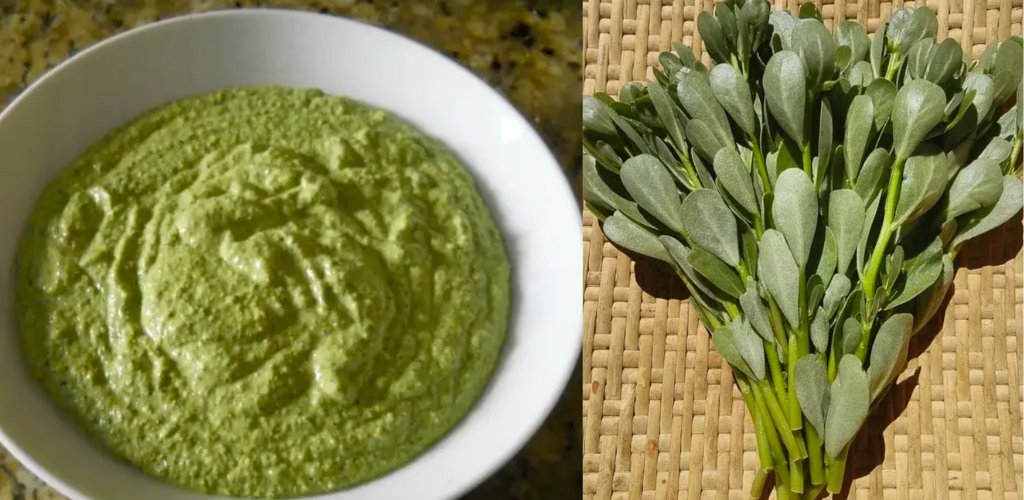The resurrection of purslane: a precious treasure in the garden and kitchen
No longer a pesky weed in the garden, purslane is a valuable treasure! This remarkable plant is reclaiming its place at farmers markets and prestigious restaurants by offering both health benefits and culinary delights.
Purslane: A Superfood with History: Known by various names such as purslane and common foxtail, purslane is a weed you want to embrace. Revered as a superfood, it even held a special place in the heart of Mahatma Gandhi and is now experiencing a resurrection.
Dr. Artemis Simopoulos’s discovery: This hardy plant sprouts from cracks in the sidewalk, invades gardens, and is called a “miracle plant” by Dr. Artemis Simopoulos, president of the Center for Genetics, Nutrition, and Health. While at the National Institutes of Health, Dr. Simopoulos discovered that purslane has the highest omega-3 fatty acid content of any green plant.

Nutrient-rich leaves with flavor: The teardrop-shaped, juicy leaves are packed with antioxidants, vitamins and minerals, making purslane a nutritional powerhouse. But that’s not all: These leaves also offer a refreshing, tart lemon flavor with a hint of spiciness, according to Sergio Vitale, the chef and owner of Aldo’s Ristorante Italiano in Chicago, who grew up eating purslane in southern Italy.
The Renaissance of Purslane: Although early Americans, including Martha Washington, enjoyed raw and pickled purslane, its use declined in the early 20th century. Fortunately, in recent years, innovative farmers, foragers and chefs have revived their interest in this beneficial weed.

Recipe: Purslane and Basil Pesto:
Ingredients:
- 2 cups young purslane leaves and stems, washed and chopped
- 45 g basil leaves, washed
- 1 garlic clove
- 45 g roasted almonds
- Juice of half a lemon
- 50 ml olive oil
- Salt and pepper to taste
Directions:
- Mix purslane, basil, garlic, almonds and lemon juice in a blender.
- Puree until well mixed.
- While the blender is running, slowly add the olive oil until the mixture is emulsified.
- Season with salt and pepper.
- Enjoy this delicious pesto on a toasted sandwich, roasted vegetables, meat or mixed with pasta.
The nutritional benefits of purslane:
- Omega-3 fatty acids: Purslane stands out as an exceptional plant-based source of these essential fatty acids, which are crucial for brain and heart health, especially for vegans.
- Antioxidants: Rich in antioxidants like glutathione, purslane helps protect cells, fight damage and slow down the aging process.
- Minerals: With notable amounts of calcium, magnesium, potassium, iron, phosphorus, manganese, copper, folate and selenium, purslane fills gaps in the standard American diet and supports overall well-being.
- Vitamin C: A significant source of this immune-boosting vitamin that helps maintain a strong and resilient immune system.
- Beta-carotene: Abundant in purslane, beta-carotene serves as a precursor to vitamin A and corrects the deficiency common in many people.
- Melatonin: Unlike most plants, purslane contains melatonin, a hormone that is important for regulating sleep patterns, making it a valuable natural source.
- Cholesterol reduction: Thanks to betalain, an antioxidant contained in purslane, it helps prevent cholesterol damage to blood vessels and has a positive effect on LDL cholesterol levels.
- Tryptophan: Purslane contains tryptophan, an important amino acid that helps regulate mood and fight depression.
